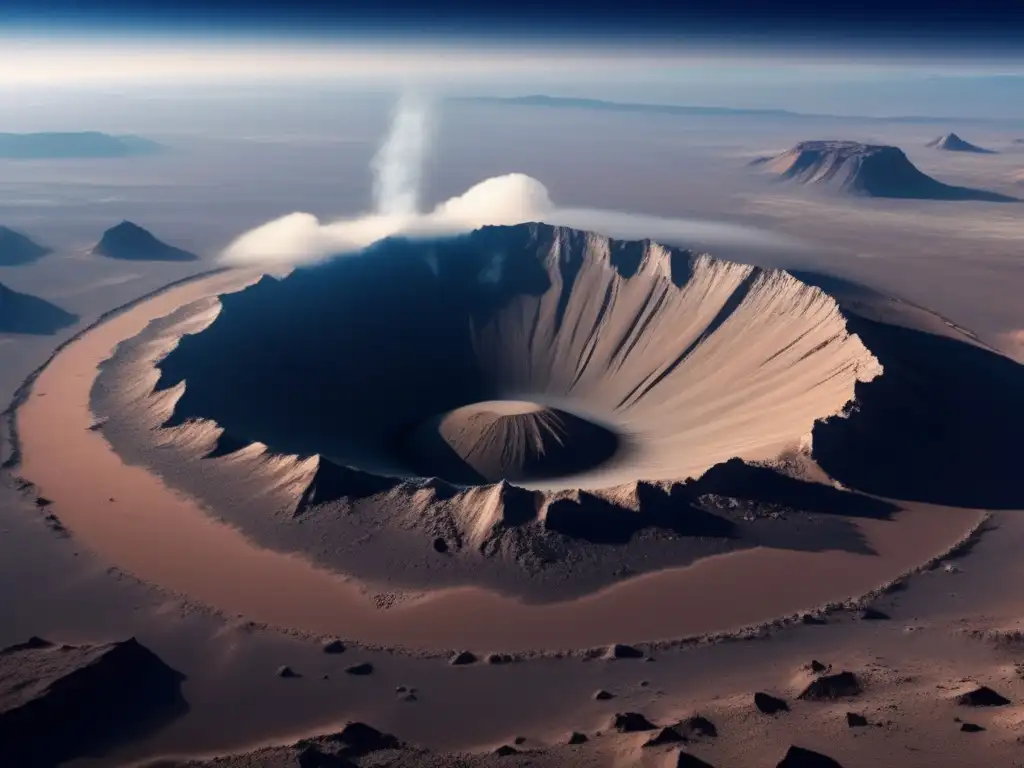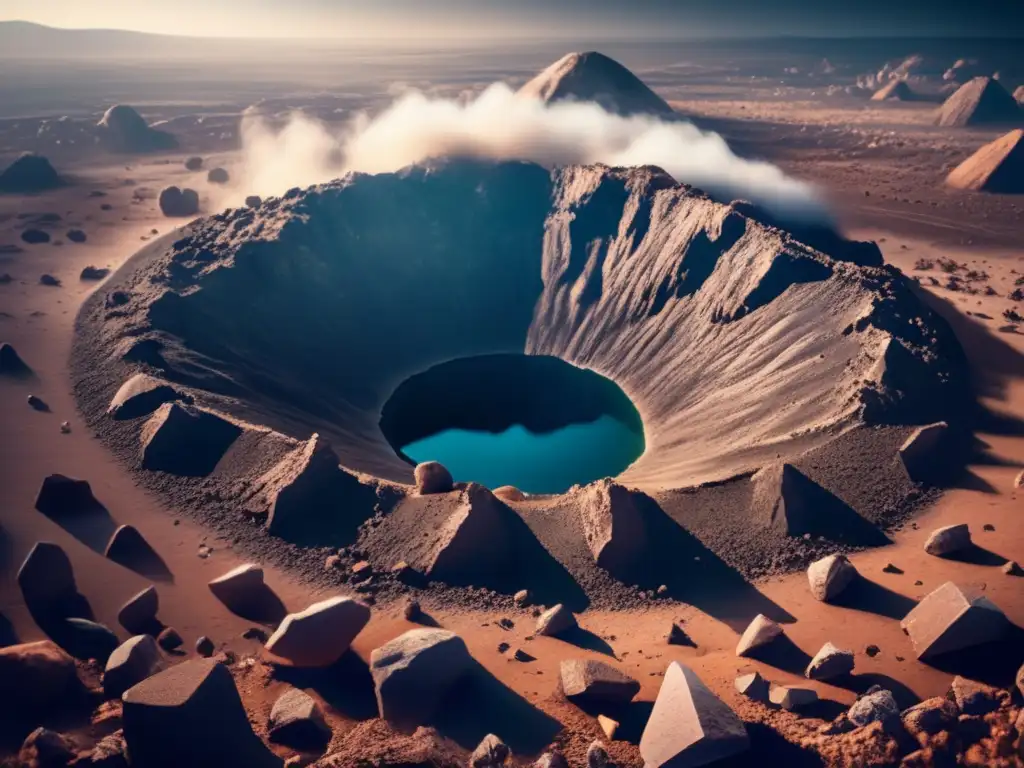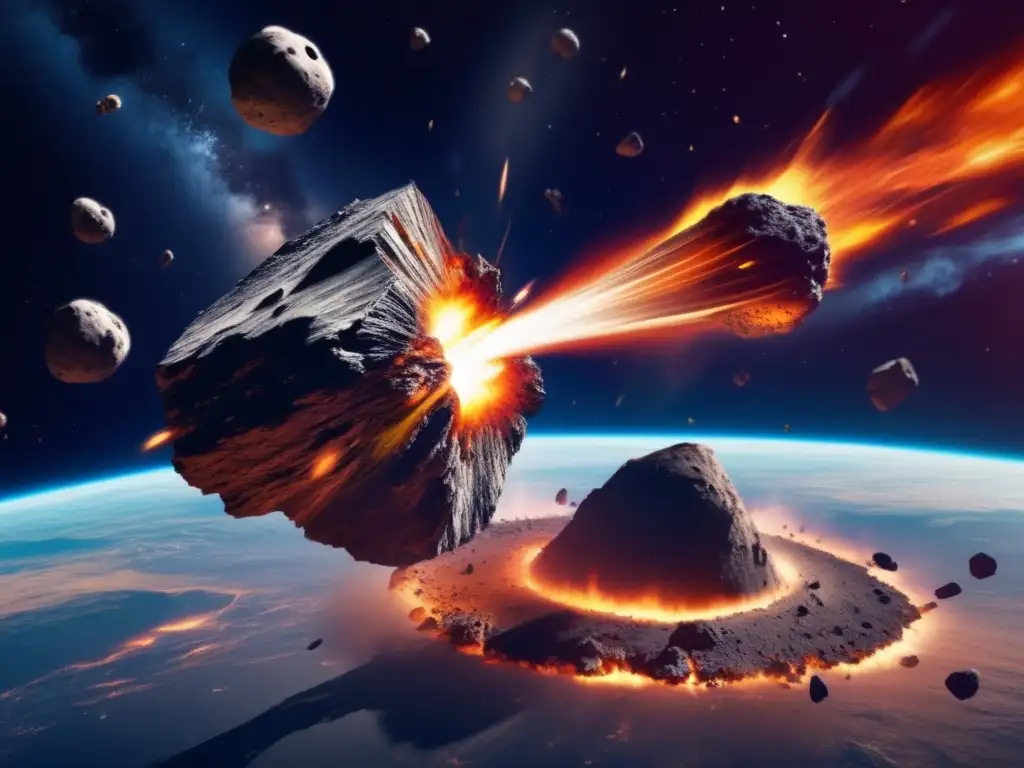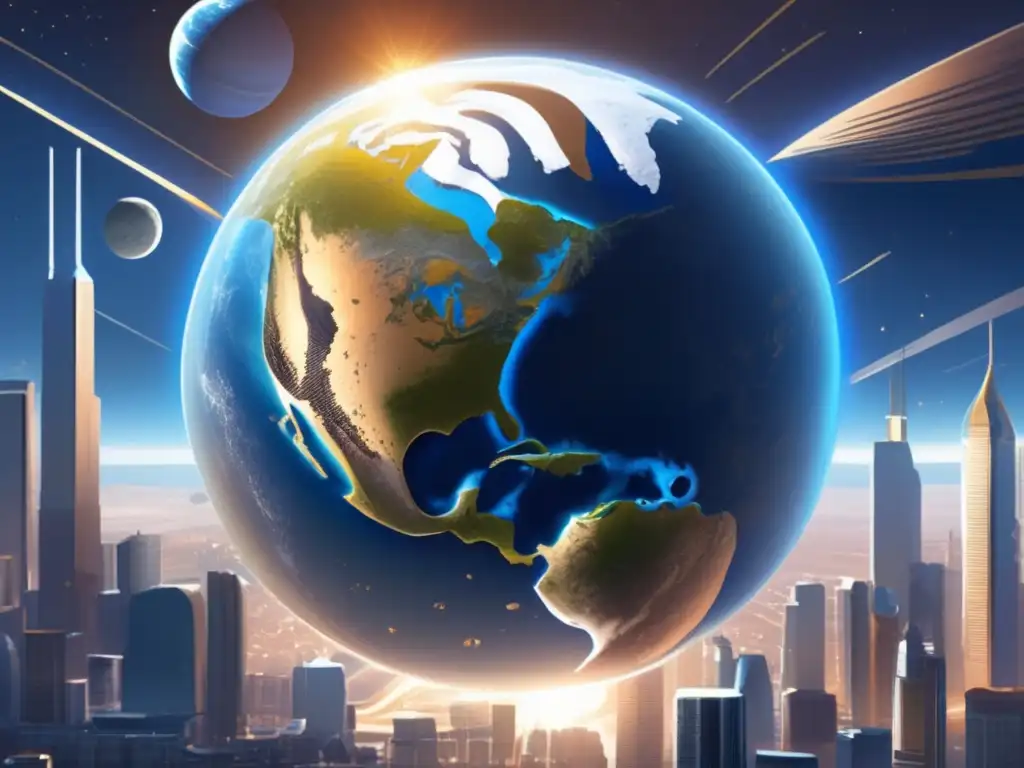Striking Evidence: How We Know When An Asteroid Has Hit

Introduction
Asteroids are celestial objects that can be found in the asteroid belt, between Mars and Jupiter, or orbiting the Sun in other areas of our solar system. They are made up of rock, metal, and ice, and range in size from tiny specks of dust to massive planetoids. Despite their small size, asteroids have played a significant role in shaping our solar system and have had a profound impact on Earth and its inhabitants throughout history.
Impact Craters

What is an Impact Crater?
An impact crater is a depression in the surface of a planet or moon that has been caused by the impact of an asteroid or another celestial body. When an asteroid collides with a planet or moon, it creates a shockwave that radiates outward from the point of impact. This shockwave creates a circular pattern of fractures and displaced material, which forms the rim of the impact crater. The central region of the crater is often filled with melted rock, or "impact melt," that has been produced by the intense heat generated during the impact.
How are Impact Craters Studied?
Impact craters are studied by examining the geological features and materials present within them. Scientists can use these features to determine the size, velocity, and angle of impact of the asteroid, as well as the kinds of materials that were present at the time of the impact. By studying the composition and structure of impact craters, scientists can gain insights into the geology and history of planets and moons throughout our solar system.
Examples of Notable Impact Craters
Some of the most famous impact craters on Earth include the Barringer Crater in Arizona, the Chesapeake Bay Crater on the east coast of the United States, and the Chicxulub Crater in Mexico, which is thought to have been caused by the asteroid impact that led to the extinction of the dinosaurs. Other notable impact craters can be found on Mars, including the Hellas Basin and the Valles Marineris canyon system, which was likely formed by a combination of tectonic activity and asteroid impacts.
Impact Ejecta

What is Impact Ejecta?
Impact ejecta is the material that is blasted out from an impact crater during an asteroid impact event. This ejecta can travel great distances from the point of impact and can be found scattered across the surface of the planet or moon. Scientists can use the direction and location of this ejecta to help determine the size and angle of impact.
How are Impact Ejecta Studied?
Impact ejecta can be studied using a variety of methods, including satellite imagery, ground-based observations, and laboratory analysis of collected samples. By analyzing the composition and distribution of impact ejecta, scientists can determine the size and velocity of the asteroid that caused the impact, as well as the nature of the materials that were present at the time of the impact.
Examples of Notable Impact Ejecta
One of the most famous examples of impact ejecta on Earth is tektite, which are small glassy objects that are formed when molten rock is ejected from an impact crater and then cools and solidifies in the atmosphere. Tektites can be found all over the world and have been used to help identify the location and size of ancient impact events. Another notable example of impact ejecta is the lunar highlands, which are thought to have been formed by the ejecta from large impacts on the Moon's surface.
Impact Melt

What is Impact Melt?
Impact melt is the molten rock that is created during an asteroid impact event. This material is created when the intense heat generated by the impact causes the surrounding rock to melt and then cool and solidify into a glassy substance. Impact melt is often found in the central region of an impact crater, where it can be up to several kilometers thick.
How is Impact Melt Studied?
Impact melt can be studied using a variety of methods, including satellite imagery, ground-based observations, and laboratory analysis of collected samples. By analyzing the composition and structure of impact melt, scientists can gain insights into the nature of the materials that were present at the time of the impact, as well as the processes that occurred during and after the impact event.
Examples of Notable Impact Melt
One of the most famous examples of impact melt is the Sudbury Basin in Canada, which was formed by a massive asteroid impact about 1.8 billion years ago. The impact melt produced by this event is thought to have been one of the largest single deposits of molten rock in Earth's history.
Frequently Asked Questions

-
What is an impact crater?
An impact crater is a depression in the surface of a planet or moon that has been caused by the impact of an asteroid or another celestial body.
-
How are impact craters studied?
Impact craters are studied by examining the geological features and materials present within them.
-
What is impact ejecta?
Impact ejecta is the material that is blasted out from an impact crater during an asteroid impact event.
-
What is impact melt?
Impact melt is the molten rock that is created during an asteroid impact event.
-
Why are impact events important?
Impact events have played a significant role in shaping our solar system and have had a profound impact on Earth and its inhabitants throughout history.
Conclusion
Asteroid impacts have had a profound impact on the planets and moons of our solar system, including our own planet. Impact craters, ejecta, and melt provide valuable information about the nature and history of these celestial bodies, and studying them can help us gain insights into the processes that have shaped our solar system over billions of years. By understanding the impact events that have occurred throughout history, we can better prepare for future asteroid impacts and protect our planet from the potential dangers they pose.
Thank you for exploring this fascinating topic with us on Asteroid Realm. Be sure to share your thoughts and comments below, and check out our additional resources for more information on asteroids and their impact on our solar system.
Additional Resources

- NASA: Asteroids
- The Chicxulub Impact: A Geologist's View
- The Moon and Earth: How Impact Craters Reveal Our Solar System's History
 Battered Earth: A Planet Shaped By Asteroid Impacts
Battered Earth: A Planet Shaped By Asteroid Impacts Craters Of The Moon And Earth: Comparing Impact Events
Craters Of The Moon And Earth: Comparing Impact Events The Yucatan Peninsula: Ground Zero For The Dinosaur Extinction
The Yucatan Peninsula: Ground Zero For The Dinosaur ExtinctionIf you want to discover more articles similar to Striking Evidence: How We Know When An Asteroid Has Hit, you can visit the Asteroid Impacts category.
Leave a Reply

Articulos relacionados: